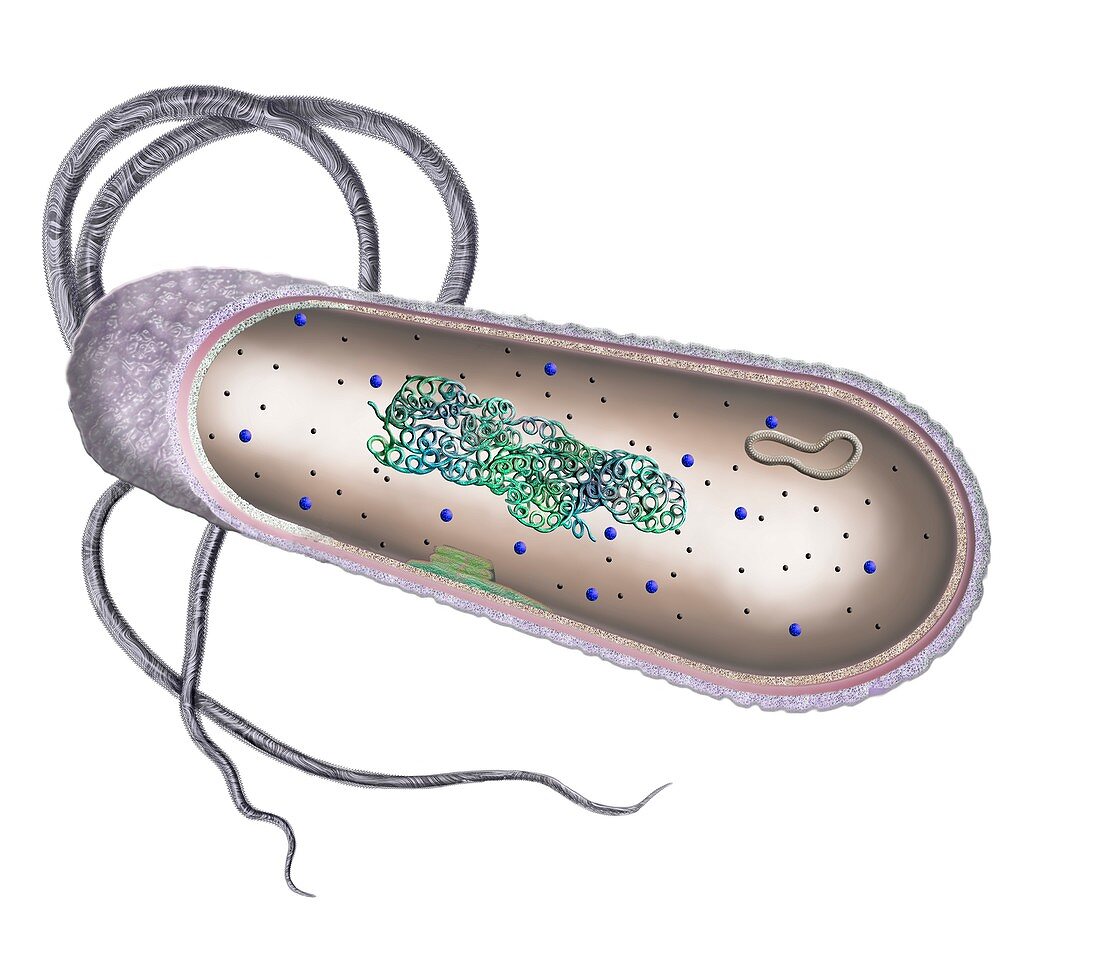Bacterial cell, illustration
Bildnummer 12542226

| Bacterial cell. Cut-away illustration of the inner structure of a typical bacterial cell. Bacterial cells do not have a membrane-bound nucleus or organelles. In the cell's cytoplasm is the bacterial chromosome (blue and green coils), which contains the cell's genetic information in the form of DNA (deoxyribonucleic acid). There is also a DNA plasmid (grey ring). Such plasmids often carry beneficial genes, such as those for antibiotic resistance, and can be exchanged between bacteria in a process known as conjugation. Ribosomes (dots), the site of protein synthesis, are also seen. A typical bacterium is covered by an external capsule, and has a rigid cell wall, and an inner plasma membrane. Some bacteria also have appendages called flagella that are used for locomotion. | |
| Lizenzart: | Lizenzfrei |
| Credit: | Science Photo Library / KEITH CHAMBERS |
| Modell-Rechte: | nicht erforderlich |
| Eigentums-Rechte: | nicht erforderlich |
| Restrictions: | - |
Preise für dieses Bild ab 29 €
Für digitale Nutzung (72 dpi)
ab 29 €
Für Druckauflösung (300 dpi)
ab 300 €
Keywords
- 3 dimensional,
- 3D,
- bakteriell,
- Bakterien,
- Bakterium,
- Bazillus,
- Biologie,
- biologisch,
- Chromosom,
- Desoxiribonukleinsäure,
- digital generiert,
- DNA,
- Dreidimensional,
- einfacher Hintergrund,
- Flagellen,
- Geißel,
- Gesundheit,
- Gesundheitswesen,
- Illustration,
- innere,
- Kunstwerk,
- Medizin,
- Mikrobe,
- Mikrobiologie,
- mikrobiologisch,
- Mikroorganismus,
- Niemand,
- Prokaryot,
- stabförmig,
- Struktur,
- weißer Hintergrund,
- Zelle,
- Zellenwand,
- Zytoplasma
